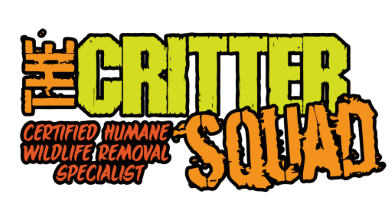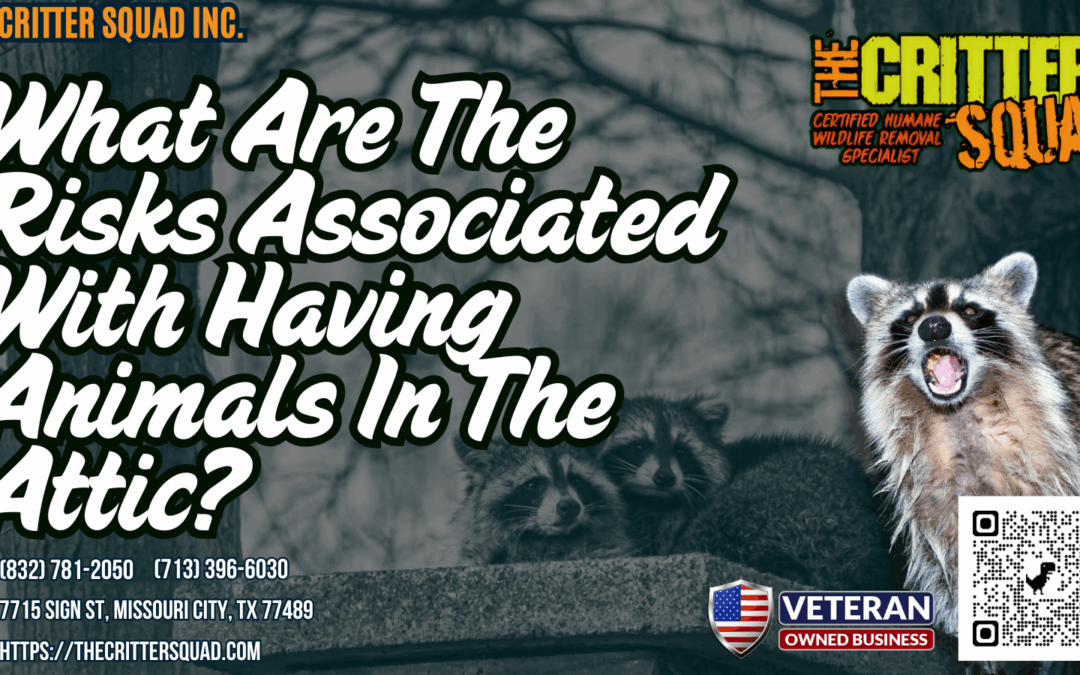Having animals in the attic poses serious risks. Property damage often arises as creatures chew through insulation, wires, and structural components. Their waste can carry harmful bacteria, leading to health threats and attracting other pests. Chewed electrical wiring increases fire hazards, while nesting can undermine structural integrity. Noise from animal activity disrupts daily life and can cause stress. Understanding the full scope of these issues reveals further complexities and the importance of timely intervention.
Key Article Highlights
- Animal intrusions can cause significant property damage, including compromised insulation and structural integrity from nesting behaviors.
- Animal waste can introduce harmful bacteria and viruses, posing serious health risks to residents.
- Chewed electrical wiring from wildlife increases fire hazards, leading to potential short circuits and sparks.
- Constant noise from animals can disrupt sleep and overall quality of life, affecting mental well-being.
- Legal and ethical considerations govern animal removal, requiring humane methods and possible permits for certain species.
Property Damage Caused by Animal Intrusions
Animal intrusions into attics can lead to significant property damage, posing both physical and financial risks to homeowners. These intruders, often rodents or raccoons, can chew through insulation, wires, and structural components, resulting in costly repairs. Such damage not only affects the immediate living space but can also decrease property value, making it essential for homeowners to address these issues promptly. In particular, raccoon behavior can lead to more extensive damage as they tend to create larger nests and may also tear apart insulation in search of food or shelter. Furthermore, rat nesting habits can exacerbate damage as these rodents often create nests in hidden areas of the attic, further compromising structural integrity. Implementing effective humane raccoon trapping strategies can help mitigate the risks associated with these intrusions. Effective pest control measures are vital in preventing these intrusions; sealing entry points and maintaining a clean environment can deter animals from seeking shelter. Additionally, homeowners should regularly inspect their attics to identify potential problems early, thereby safeguarding their investment and ensuring a safe living environment. Proactive measures can protect both property and peace of mind. Implementing rat exclusion techniques can further enhance the effectiveness of these preventative strategies.
Health Risks From Animal Waste and Parasites
When wildlife takes refuge in an attic, the presence of animal waste and potential parasites poses serious health risks to inhabitants. Animal droppings can harbor harmful bacteria and viruses, leading to respiratory issues and other health hazards for residents. Additionally, the waste may attract pests such as flies and rodents, further complicating the situation. Parasite transmission is another significant concern; parasites such as fleas, ticks, and mites can migrate from the attic into living spaces, potentially affecting both humans and pets. It is essential for homeowners to address these issues promptly to mitigate health risks. Professional removal and sanitation services can help create a safe environment, protecting the well-being of all household members from the dangers associated with animal intrusions. Moreover, bats in houses can amplify these health concerns due to the unique pathogens they carry. The presence of bats can also lead to the accumulation of guano, which may contain harmful bacteria that exacerbate respiratory problems.
Fire Hazards Due to Chewed Wiring
Animals in the attic can pose significant fire hazards due to their tendency to chew on electrical wiring. This damage can create exposed wires, increasing the risk of sparks and potential fires. Implementing fire safety measures and regular inspections can help mitigate these dangers and protect both property and inhabitants.
Chewed Wires Risk
How can the presence of wildlife in an attic pose a significant risk to home safety? Animals, such as rodents, often chew on wiring, leading to dangerous electrical hazards. The insulation around wires can suffer damage, increasing the likelihood of short circuits and potential fires. Chewed wires not only compromise the integrity of electrical systems but also create a higher risk of ignition due to exposed conductors. Homeowners must recognize that these hazards can escalate quickly, resulting in costly repairs or even devastating property loss. Understanding the implications of chewed insulation and damaged wiring is vital for maintaining a safe living environment. Prompt action is essential to mitigate these risks and guarantee the safety of both occupants and their homes.
Fire Safety Measures
The presence of chewed wiring poses severe fire hazards, making the implementation of fire safety measures a priority for homeowners. To mitigate these risks, regular inspections of electrical systems in attics are essential. Homeowners should consider installing fire alarm systems that are strategically placed to detect smoke early. Additionally, ensuring proper attic insulation can reduce the likelihood of fire spreading quickly. Sealing potential entry points can help prevent animals from accessing wiring and causing further damage. By taking these proactive measures, homeowners can protect their families and properties from the devastating effects of fire. Ultimately, a combination of vigilance and appropriate safety systems will foster a safer living environment for all.
Structural Integrity Compromised by Nesting Animals
Nesting animals can silently undermine the structural integrity of an attic, posing significant risks to the overall safety of a home. Their nesting behavior often leads to the accumulation of materials such as insulation, wood shavings, and feces, which can contribute to moisture retention. This moisture can promote mold growth and weaken wooden structures, resulting in structural damage that compromises the attic’s stability. Additionally, certain animals may gnaw on beams and wires, leading to additional risks, including electrical hazards. Homeowners must remain vigilant for signs of animal activity in the attic, as early intervention can help prevent extensive repairs and guarantee the safety of the household. Engaging professionals for humane removal and repairs is advisable for long-term solutions.
Noise and Disturbance Impacting Quality of Life
Unwelcome noises from animals in the attic can disrupt the tranquility of a household, greatly impacting the quality of life for its residents. The presence of wildlife creates significant noise pollution, as scratching, scurrying, and vocalizations can be incessant and unnerving. This constant disturbance often leads to sleep disruption, affecting the overall well-being and mental health of individuals and families. The stress of dealing with these disturbances can further strain relationships and hinder daily activities. Residents may find it challenging to focus or relax, diminishing their enjoyment of home life. Addressing animal intrusion promptly not only restores peace but also fosters a healthier living environment, allowing families to thrive without the burden of unwelcome interruptions.
Legal and Financial Implications of Wildlife Removal
The removal of wildlife from attics involves maneuvering through various legal and financial considerations that homeowners should be aware of. Local wildlife regulations can dictate the methods and timing of removal, potentially impacting costs associated with professional services. Additionally, liability and insurance issues may arise, highlighting the importance of understanding one’s responsibilities in these situations.
Local Wildlife Regulations
How do local wildlife regulations impact the process of removing animals from attics? These regulations are significant for ensuring wildlife conservation and protecting animal rights. Many jurisdictions require permits for removal and mandate humane practices. Understanding these laws helps homeowners avoid legal repercussions and financial penalties.
| Regulation Type | Description | Implications |
|---|---|---|
| Permits Required | Some areas require permits for removal | Legal compliance needed |
| Prohibited Species | Certain animals may be protected by law | Cannot be harmed or displaced |
| Humane Methods | Regulations often dictate humane removal methods | Ethical considerations enforced |
| Reporting Obligations | Some laws require reporting captured wildlife | Accountability to wildlife authorities |
Navigating local regulations is essential for responsible animal removal while fostering a respectful coexistence with local wildlife.
Removal Service Costs
Removing wildlife from attics can incur significant costs, impacting homeowners both legally and financially. Service quotes can vary widely based on factors such as the type of animal, the extent of the infestation, and the complexity of the removal process. Homeowners should anticipate removal pricing that includes not only the extraction of the animals but also any necessary repairs to prevent future invasions. Additionally, reputable wildlife removal services often provide detailed estimates, ensuring transparency and helping homeowners make informed decisions. Understanding these costs is essential, as it allows homeowners to budget accordingly while prioritizing humane treatment of the animals and compliance with local regulations. Ultimately, investing in professional removal services can safeguard both property and peace of mind.
Liability and Insurance Issues
When homeowners face wildlife infestations in their attics, understanding the legal and financial implications of wildlife removal becomes essential. Homeowners must consider their insurance coverage, as many policies may not cover damage caused by wildlife or the costs of removal. Inadequate insurance can lead to significant out-of-pocket expenses, particularly if a liability claim arises from injury to a person or pet due to unsafe conditions created by the infestation. Additionally, if a homeowner attempts removal without proper knowledge or permits, they may face legal repercussions. Homeowners are encouraged to consult with their insurance agents and wildlife removal professionals to guarantee thorough protection and responsible action, fostering a safe and humane approach to wildlife management.
Frequently Asked Questions
How Can I Tell if Animals Are in My Attic?
Detecting animals in the attic often reveals subtle signs; scratching sounds echo like whispers in the night. Observing activity patterns, such as unusual noises or droppings, can illuminate their presence, guiding compassionate intervention.
What Types of Animals Commonly Invade Attics?
Common attic invaders include squirrels, often causing damage through their nesting behavior, and raccoons, which can pose health risks and structural concerns. Understanding these animals helps in addressing the situation compassionately and effectively.
Are There Preventative Measures to Keep Animals Out?
In the quest for a serene home, preventative barriers emerge as guardians. Employing animal proofing tips, such as sealing entry points and maintaining cleanliness, fosters harmony, ensuring that unwanted guests remain outside, where they belong.
How Do I Safely Remove Animals From My Attic?
To safely remove animals from the attic, one can employ humane traps, ensuring minimal stress for the creatures. Alternatively, seeking professional removal services guarantees expert handling, prioritizing both safety and compassion for the animals involved.
Can Animals in the Attic Cause Noise Complaints From Neighbors?
In a world where peace reigns, noise disturbances from animals in the attic can indeed strain neighbor relations. Such sounds, often disruptive, may lead to complaints and foster tension among those living nearby. Compassionate resolution is essential.




























